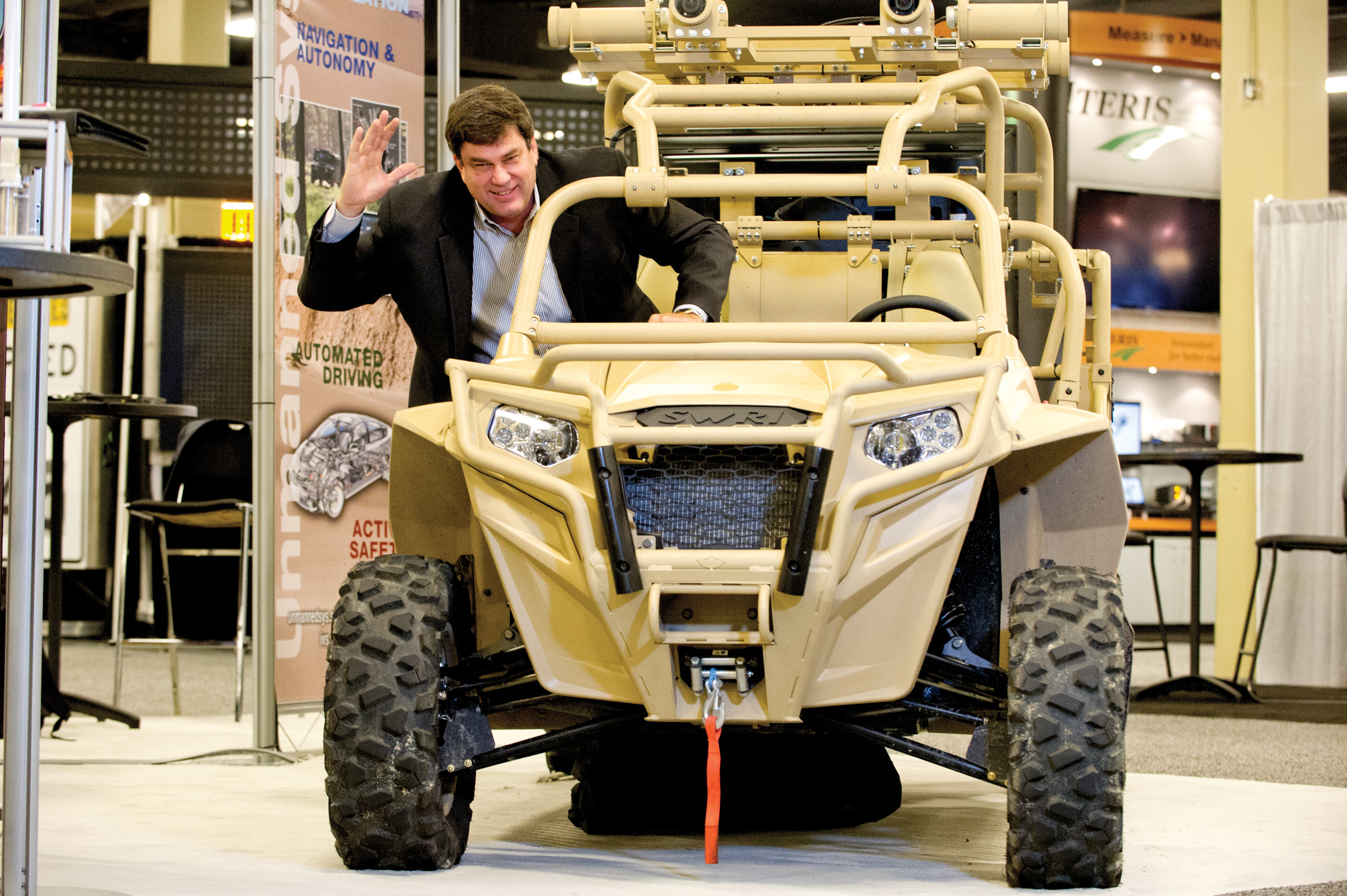Southwest Research Institute (SWRI) is in the driver's seat for driverless vehicle innovation. SWRI's latest autonomous vehicle model, an upgraded Polaris MRZR, is parked on the show floor at ITS America, and it is ready for action, literally. The latest SWRI intelligent vehicle systems are being tested by the US military.

Steven Dellenback of Southwest Research Institute
The platform on the “unmanned ground vehicle” utilises Small Unit Mobility Enhancement Technology (SUMET) perception and autonomy software framework as a foundation, and is actively being used in a joint program with the US Army called the Dismounted Soldier Autonomy Tools (DSAT) Program.
What makes this driverless technology unique is the sole reliance on low-cost cameras as sensors. It does not rely on GPS or map data.
“We feel our way through the environment,” says Steven Dellenback, director, intelligent systems department, automation and data systems division.
One of the priorities of SWRI's autonomous technology development is to bring the price down for the military. Although there is $45,000 worth of hardware on the vehicle, the cost is much lower than other driverless technologies.
“Our philosophy is to keep the software as modular, scalable and extensible as possible, thereby allowing our customers the flexibility to take advantage of the natural price reductions in sensors and computing,” Dellenback explains.
Although the main focus of the institute's autonomous vehicle research is for military use, Dellenback points out that the same innovations can be used for a variety of active safety systems in civilianl vehicles.
%$Linker:









